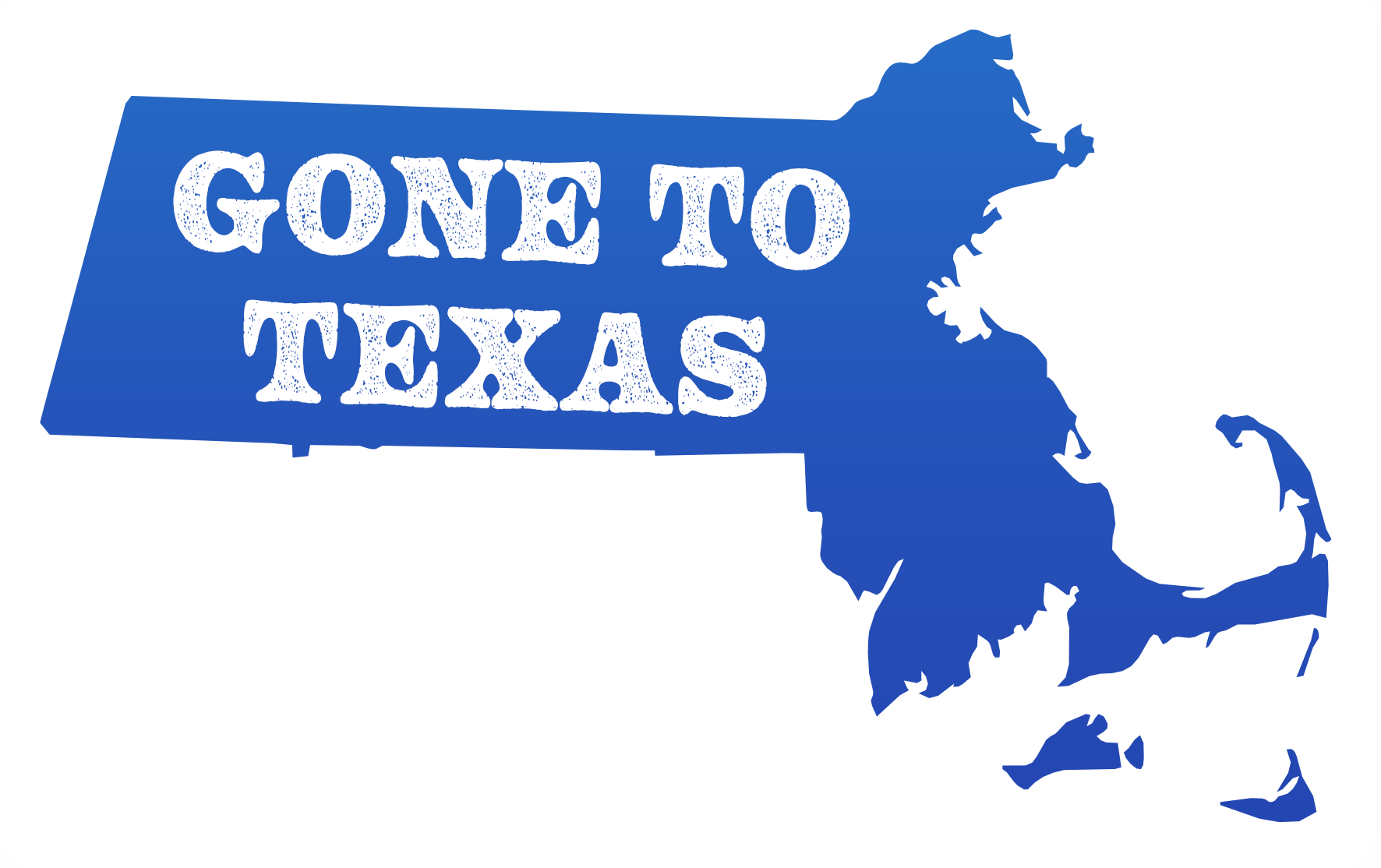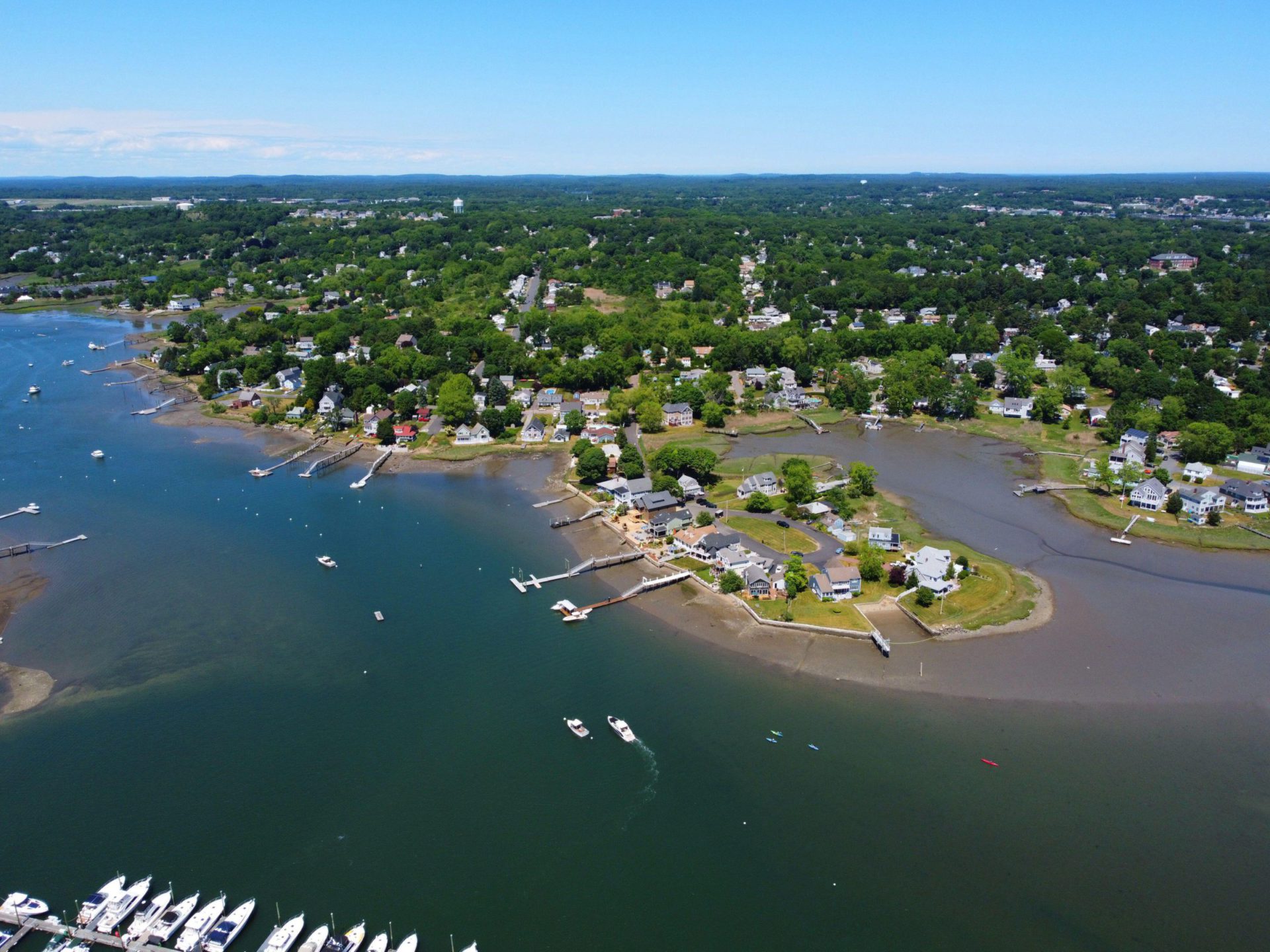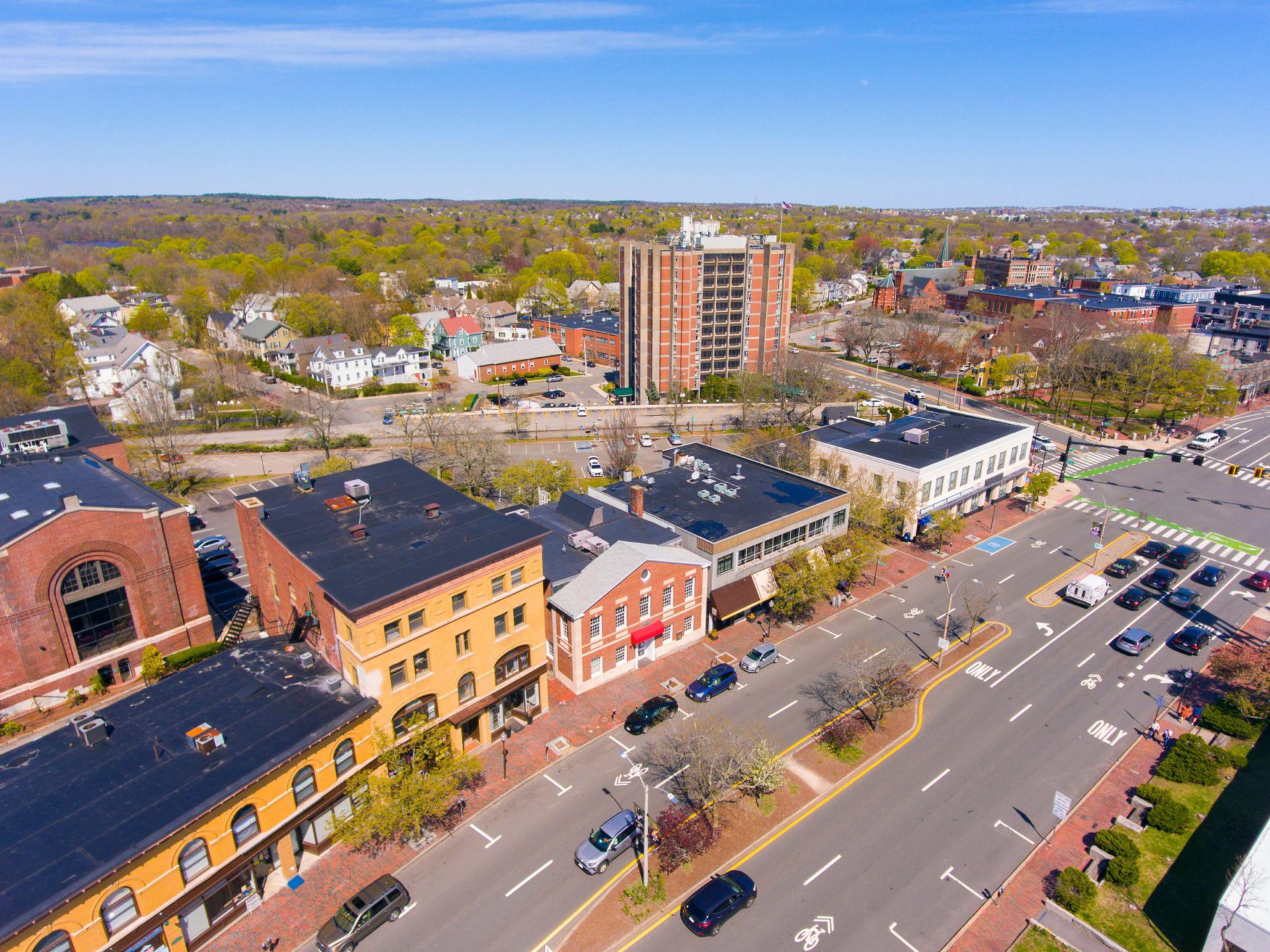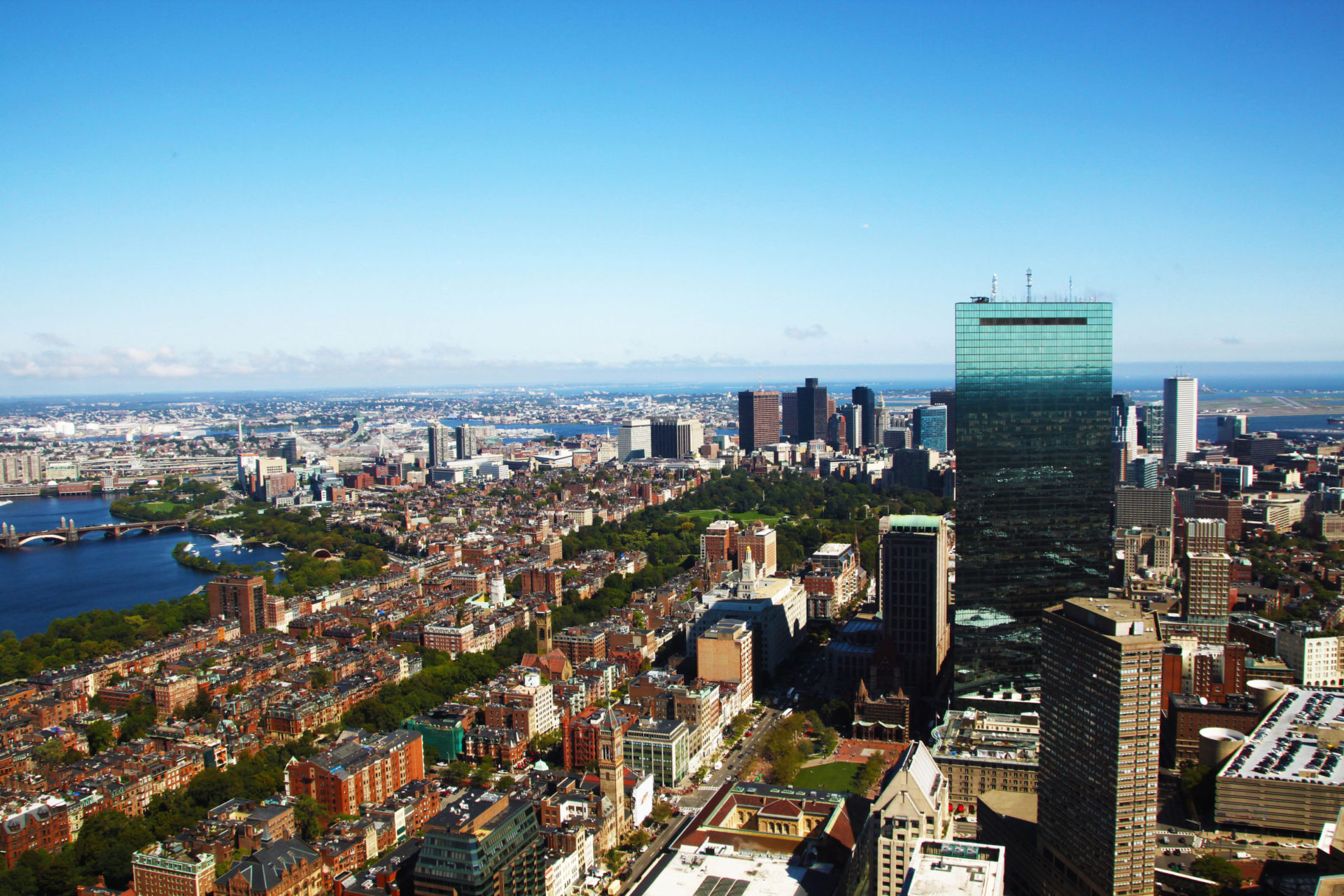
Massachusetts has been losing residents to other states for a full generation now. That fact sits uncomfortably with the state’s self-perception as a model of progressive governance.
True, the state often ranks as the best-educated and near the richest. On those metrics, it is comparable to Denmark — a country of similar size that we often hear is the pinnacle of liberal democracy.
Yet the state’s inability to retain its own residents, and its high barriers to entry, are signs that Massachusetts increasingly achieves its rarefied status not by inclusion but exclusion. It is becoming closed off — not by physical borders or the boundaries of citizenship, but by prohibitively high housing prices.
The state’s housing-driven demographic decline is also the story of the United States. For years, families have been leaving rich cities like Boston, San Francisco, Los Angeles, and New York because of land use policies that make it difficult to build. They have been moving to parts of the country that have the space and the policies to encourage construction, such as Texas and Florida. Neither of these red states has ever expressed the commitment to egalitarianism and progressivism that Massachusetts’s liberal political leadership has, yet they are now bringing in the masses far more than the Bay State does.
“Those are the values that people purport to hold often here in Massachusetts, but the reality is that’s not the situation,” said Jesse Kanson-Benanav, the executive director of Abundant Housing Massachusetts. “And communities across the commonwealth are closed, are closed to people who don’t have sufficient income to afford large, expensive luxury single-family homes.”
There are two paths the state could follow. One is to reverse the stagnation of the past decades and build — physically build up — Boston and other cities and allow more people to share in the prosperity driven by the state’s world-leading industries. The other path is to continue to limit construction so as not to disturb the built environment bequeathed by previous generations, and see the state become the preserve of the fortunate.
Since the turn of the century, births in Massachusetts have been falling and deaths have been rising. The “natural increase” in the population today — the surplus of births over deaths, about 6,000 per year — is more than offset by the number of people leaving the state, roughly 200,000 annually in recent years, according to a Boston Indicators estimate. Tens of thousands more people are leaving Massachusetts for other states than the other way around. The reason the state’s population has been growing is international migration, rising from a net increase of under 20,000 a year at the start of the century to over 50,000 annually now. In other words, not counting foreign arrivals, Massachusetts has been shrinking.
Of course, Massachusetts is not an outlier. Other rich states have seen demographic stagnation. Most notably, California has suffered an exodus of residents and, in some recent years, outright population declines.
But the same forces that are shaping other blue coastal states are even more intense in the Bay State, and even easier to see at work. What’s of particular note is that the immigrants who have arrived in Massachusetts over the past twenty-plus years, especially in Greater Boston, are highly educated, upwardly mobile professionals.
To be sure, the state has also seen large numbers of arrivals from medium-income countries, such as the Dominican Republic and Brazil. And during the crisis at the border of the past few years, many migrants from poor places have arrived in the state as refugees. But, as a group, the state’s foreign-born population is economically high-achieving, with the second generation having higher incomes than in any other state with a significant immigrant population.
In recent years, Chinese migrants have made up the largest category of the foreign-born in Greater Boston, according to a 2024 report by Boston Indicators and the Immigration Research Initiative. More than two-thirds are software developers or scientists. Indian migrants, the third-largest category, are more than three-quarters software developers or scientists.
Massachusetts has impressively high education and income levels relative to the rest of the country. But those development indicators, rather than showing a state that is lifting its own population up, in no small part show a state that is attracting high-value newcomers, not just from the rest of the country but also from around the world. Nearly a quarter of international migrants to the Greater Boston area have graduate or professional degrees, equal to the region’s overall rate. This is a level of attainment only Washington, D.C., and the San Francisco Bay Area measure up to, and significantly higher than for Americans as a whole. Immigrant households in the state earn a median income of $84,290. That’s about $12,000 less than the median for the U.S.-born in the state, but nearly $10,000 more than the country’s U.S.-born average, according to a Migration Policy Institute analysis of census data.
As they do across the country, immigrants run many low-end services in Massachusetts, operating car washes and doing dishes at restaurants. But what’s notable about the state is how many are at the other end of the barbell distribution, working in elite careers. They are much like Americans who migrate to Massachusetts from other states, who are disproportionately highly educated and high-earning, and are attracted to the same kinds of high-paying jobs and rewarding positions.
Christen McLaughlin, a fraud analyst at a major financial services corporation, moved with her husband, an insurance property claim analyst, to Nashua, New Hampshire, last year.
They had been living in a small condo in Danvers, a town on Boston’s North Shore, but decided to look for a home with more space, as they are hoping to have children. When they searched in the area around Danvers, though, they couldn’t find anything that met their requirements in the ballpark of $400,000, the highest price they could afford with their mortgage pre-approval. When they broadened the search, “we kind of felt we were getting farther and farther away from any sort of property we’d want to buy,” McLaughlin said in a phone interview.

For now, they are living in an apartment that McLaughlin says rents for far less than what they would be paying in Massachusetts, with far better amenities. They now plan to buy in the Nashua area eventually.
Housing wasn’t the only relevant consideration. McLaughlin noted that New Hampshire offers a lower cost of living in many areas, from taxes to daycare. Even her Orangetheory fitness classes are cheaper in New Hampshire. Still, the prohibitive cost of buying a house was the deciding factor. They considered places with very low costs of housing, after seeing friends move to South Carolina and Virginia. But, ultimately, family responsibilities prevented them from leaving New England altogether.
McLaughlin’s parents, she said, were able to buy a house a generation ago in Revere, a close-in North Shore suburb, on working-class incomes. If that option were available to her, she would have stayed in the area.
She lamented the fact that so many young professionals had to leave the state. “I do think it’s kind of a bummer, because a lot of people would probably like to live closer to their families and everything,” she said.
Nearly a third of those leaving the state in recent years are in the age group of 26 to 34, according to a study published this year by Boston University. Only a small portion of out-migrants are retirees. In fact, Federal Reserve data shows that the state’s yearly labor force peaked in 2018, then dropped off and appears to have stagnated since — an ominous sign for a region with an outwardly healthy economy.
“People have a house, they have three kids, and over the next 40 years you build zero new homes. I mean, where are those kids gonna go?” McLauglin asked.
Massachusetts now boasts the best universities in the world, the best biotech market, and other leading industries. If it struggles to house or retain top workers, though, eventually it will lose its edge. Over the years, its high levels of what economists call human capital have allowed Boston to grow and excel even after losing key industries and suffering decline. To deny talented people housing is to kill the goose that laid the golden egg.
Michael Goodman, a professor of public policy at the University of Massachusetts Dartmouth who has long studied the regional economy and housing market, said in a phone call that the state risks missing out on talent by pricing out energetic and highly educated people and endangering its economic productivity.
And, in human terms, the state risks ending up with fewer children and having only “communities that are largely made up of older people, but who are somehow not welcoming of the next generation,” Goodman said. “So I think there are social and economic opportunity costs.”
“Massachusetts just can’t survive as a state that is only accessible to wealthy people,” said Jesse Kanson-Benanav of Abundant Housing Massachusetts on the phone. “We lose the diversity of income, we lose people who can fill a variety of roles that we need in our economy.” And if those people continue to be priced out, he said, “Massachusetts could lose its vibrancy and become a bedroom community for the wealthy of sorts.”
Once derided as “Taxachusetts,” Massachusetts is no longer among the highest-taxed states, thanks to a 1980 referendum limiting property taxes, and subsequent cuts to income and business taxes. It now ranks thirteenth-highest in its state and local tax burden. A new 4 percent “millionaires’ tax” that went into effect in 2023 could spur some high earners to leave, but it’s too early to say. Nor are the state’s health care costs unusually high — in fact, individuals and families pay some of the lowest premiums in the nation.
Instead, living in Massachusetts is particularly expensive because of its housing market. Housing in Boston and most parts of the state is not within reach for most families, unless they happen to have bought there decades ago. Median rent for a two-bedroom apartment in the Boston metro area is estimated by the U.S. Department of Housing and Urban Development to be just over $3,000 in 2024, the highest in the country except for the Bay Area and other expensive parts of California.
The median price of a single-family home in the Boston area, meanwhile, was $793,400 in the second quarter of this year, according to the National Association of Realtors. The corresponding price for a condo was $629,200. To put that in perspective, the typical qualifying income for a mortgage on a single-family home in the Boston area, assuming a 20 percent down payment, is $206,040, per the NAR. That’s double the median family income in the country.
In years past, families could avoid being priced out of Greater Boston by embracing being “house poor” — that is, by taking on a lot of mortgage debt and cutting back elsewhere in their budgets. Especially for those who could leverage their way into high-earning jobs in the city, it was worth the risk. But the run-up in prices, combined with higher mortgage interest rates, has made that less viable an option.
Another way to look at the problem is that it is possible for a Boston family with two professionals earning six-figure incomes to fail to qualify for a loan on a typical single-family home unless they are established enough in their careers to have about $150,000 to dedicate to a down payment.
Even with high prices, there has been so much excess demand in recent years that it has become common for listings to see bidders offer above asking price and to waive inspections, a level of competition that acts as an additional deterrent to families on the fence about buying.
The problem for Massachusetts is that the families that might have the means to buy a house are the same ones that have the financial and career flexibility to consider leaving the area altogether in search of more bang for their buck.
One such example is Mark, who works in a software field in high demand. (His name has been changed to protect his privacy.) During the depths of the pandemic shutdowns, he decided with his wife to take their two children and leave Arlington, a suburb northwest of Boston, and relocate to upstate New York.
They had enjoyed their location in Arlington, where they could walk to coffee shops, visit friends nearby, and take advantage of the arts in Boston. But with two young children, they needed more space. A condo that met their needs in Arlington would have run at least $600,000 at that time (prices have since risen).

Instead, they decided not to return to Massachusetts after the pandemic, and purchased a four-bedroom house for under $500,000 near Saratoga Springs, an alternative made possible because of Mark’s ability to work remotely. “For folks that do software products, software engineering, the cost-of-living arbitrage is a real thing,” he said on the phone, referring to the practice of working in a high-paying job remotely from a less expensive area.
Housing prices aside, Mark said, his wife would have preferred to stay in the Boston area. “If that hurdle had been lower, that very definitely could have gone a different way,” he said.
For most of the twentieth century, rents and house prices in Boston grew only very slowly — both by less than 20 percent in real dollars between 1900 and 1975, according to the Historical Housing Prices Project at the Federal Reserve Bank of Philadelphia.
Something changed after that, and house prices soared more than 180 percent over the next 40 years. Rents rose 33 percent. House price growth has only continued to balloon in the years following the 2008 financial crisis, multiple indices show.
What happened in the 1970s to cause prices to start rising inexorably? At that time, the state underwent “the Big Downzone,” a term coined by researcher Amy Dain, who has exhaustively cataloged the zoning laws of eastern Massachusetts towns.
In the space of just a few years, most towns and cities in Greater Boston stopped the vast majority of apartment construction, Dain has found, restricted their zoning, and adopted official “no growth” or “low growth” policies.
These policies were put in place right as the black and migrant populations were growing, and as the civil rights movement had success in passing anti-discrimination legislation. The timing, Dain has argued at length, is a sign of how zoning has been used as a tool of exclusion.
In the early decades of the twentieth century, when the population was soaring, Boston and the state were willing to add housing to accommodate both the state’s native-born population and huge numbers of international newcomers — in 1930, nearly two-thirds of the state’s population was either foreign-born or of foreign or mixed parentage.
But starting in the 1970s, land use regulations put a stop to that. The greater Boston area ran out of sites for greenfield single-family housing on large lots, and zoning laws have not allowed for infill. “I think that the issues we have today are especially rooted in that downzone from the 1970s and that we’ve been seeing an issue with housing shortage ever since that time period,” Dain said in a phone interview.
Today, the Boston metro area has highly restrictive land use regulations, according to the Wharton Residential Land Use Regulatory Index. Surprisingly, for a small, relatively crowded state, many towns have large minimum lot sizes — a minimum of nearly an acre is common. Another unusual feature of land use policy is that Massachusetts gives disproportionate power to its towns and cities, in contrast to other states that give greater discretion to counties. That means that developers must contend with individualized rules and processes pertaining to more than 300 jurisdictions in the state. Frequently, getting a permit for development will mean getting sign-off from a planning board or city council or town meeting.
A number of high-quality studies have found that stricter land use regulations drive up housing prices. A 2006 study published by the Pioneer Institute for Public Policy Research and Harvard University’s Rappaport Institute for Greater Boston that examined Dain’s dataset of local housing restrictions found that housing prices might have been 23 to 36 percent lower if regulation had not greatly slowed new permitting since 1990.
After all, that is the basic law of supply and demand: If demand rises faster than supply, prices go up. A glance at the data reveals a major supply shortfall.
Since 1990, Massachusetts has averaged about 1,300 new permits for private housing per month, according to the Building Permits Survey of the U.S. Census Bureau. This means that, for every 10,000 residents living in the state in 1990, just two permits for new housing have been granted each month since then.
The corresponding number for Texas, by comparison, is seven. This is a key factor in explaining why the population in Massachusetts has grown by only 16 percent since 1990, compared to 80 percent in Texas. Permitting in the Boston metro area has been just one tenth that of Austin.
In fairness to Massachusetts progressivism, the state has made modest moves over the years to make it easier to build.
One of those moves was to force towns to permit new housing. In 1969, the state passed what is often called the “Anti-Snob Act,” or Chapter 40B, with support in large part from the state’s liberals. To simplify, the law gives the state the power to override local land use restrictions when municipalities fall short of certain affordable housing goals. Clearly, though, the law, while enabling a significant amount of additional housing, has been insufficient, which is part of why it has remained controversial.
In recent years, as Massachusetts has gotten even more blue, the legislature has moved to new reforms. In 2021, the legislature passed the MBTA Communities Law, which requires cities and towns that are served by the Massachusetts Bay Transportation Authority to establish at least one district in which multi-family housing is permitted by right. That law, too, has faced outright rebellion from towns since enactment.
Lastly, in August, Governor Maura Healey signed the Affordable Homes Act, a law that will legalize the construction of accessory dwelling units by right in single-family zoning districts in all communities, allowing existing homeowners to build “mother-in-law suites” without needing local government approval. It will also prohibit parking mandates, which are thought to significantly raise the cost of development, near transit.
The more recent reforms are generally in line with the latest thinking of the YIMBY movement — YIMBY standing for “yes in my backyard,” the opposite of NIMBY or “not in my backyard.” NIMBYism refers to homeowners who resist new development in their neighborhoods out of the fear that it will lower their quality of living or their property values.
The laws in question represent top-down interventions that are bound to result in construction that is not in line with local residents’ desires. In effect, state legislators said that, by failing to permit sufficient housing anywhere, localities everywhere are now going to be forced to accept dense multifamily housing.
Yet the glaring factor in the lack of housing supply in the state is not the failure of semirural towns like Paxton, about 50 miles out from Boston and covered by the MBTA Communities Law, to build giant apartment towers. Instead, it’s the hollowing out of Boston itself.
Considering what a powerful city Boston still is today, it is remarkable to note that its population in 1950 was actually a quarter larger than it is now. Despite the fantastic increase in the city’s economic power since then, it has failed to rebuild after the slum clearances of the 1950s and urban flight of the 1960s and 1970s.
During the same period, from 1950 to now, the population of the state grew by nearly half. Millions of people spread out further and further out into the suburbs and exurbs — and even across state lines into New Hampshire and Rhode Island. The second-largest city in Massachusetts, Worcester, has benefited from Boston’s relative decline, and grown as a regional power. Still, growth elsewhere in New England has not been able to adequately compensate for decline in the Hub.

Boston regulates land use intensively. Its zoning code is five times the length of those of comparable cities, as revealed by a report commissioned by the city and published last year. Requirements also vary by neighborhood, making compliance additionally difficult. The Board of Appeals grants roughly ten times the number of variances each year as peer cities, indicating an extreme level of government discretion over projects. Authorities have used that power, too: Thomas Menino, the mayor from 1993 to 2014, reportedly personally reviewed permits for construction in the city. And the zoning code is just one aspect of land use regulation in Boston, which includes historic district rules, design review, and environmental rules — as well as the state’s building code.
As a result, Bostonians are under intense pressure to either move up the income ladder in order to afford local housing prices or move out to places where construction is easier. Remarkably, three faraway states — Texas, Florida, and North Carolina — provide about as much housing for Bostonians as Boston does. For example, in 2022, Suffolk County, which includes Boston and a few close-in towns, issued a total of 4,069 permits for new private houses. In that year, Florida, Texas, and North Carolina welcomed 4,017 migrants from Suffolk County, according to IRS tax return data.
In the past decade, Florida alone has seen an influx of nearly 16,000 people from Suffolk County, nearly as much as the county’s total population growth, which was 17,400.
To step back: Since sometime in the 1970s, localities in Massachusetts have made housing scarce through land use restrictions, and for decades now demand has outstripped supply. Boston and all the towns in the state find themselves in a sort of collective action problem: If any one locality significantly eased land use rules, it would be rapidly transformed because of the soaring demand. Fearing such abrupt change, localities resist even marginal upzoning. State legislatures have resorted to effectively strong-arming towns en masse.
Reversing that trend will take far more assertive measures, starting with the Boston metro area. “It’s going to take decades of building at a pace that Boston has not seen since the ‘60s or so to get out of this crisis,” Andrew Mikula, a housing expert at the free-market state think tank Pioneer Institute, said in a video call.
Boston is one of the richest and most successful places in the world. On paper, it is a near-utopia, filled with highly educated and high-earning families.
But that success is not quite what it seems. The city has been skimming the cream of the crop from the rest of the country, and the world, as much as it has been lifting up the middle class. Unlike in past eras of dynamism, it is increasingly failing to bring along those in its own backyard. It is not building the society it aspires to because it is not physically building.
Exhausted by science and tech debates that go nowhere?